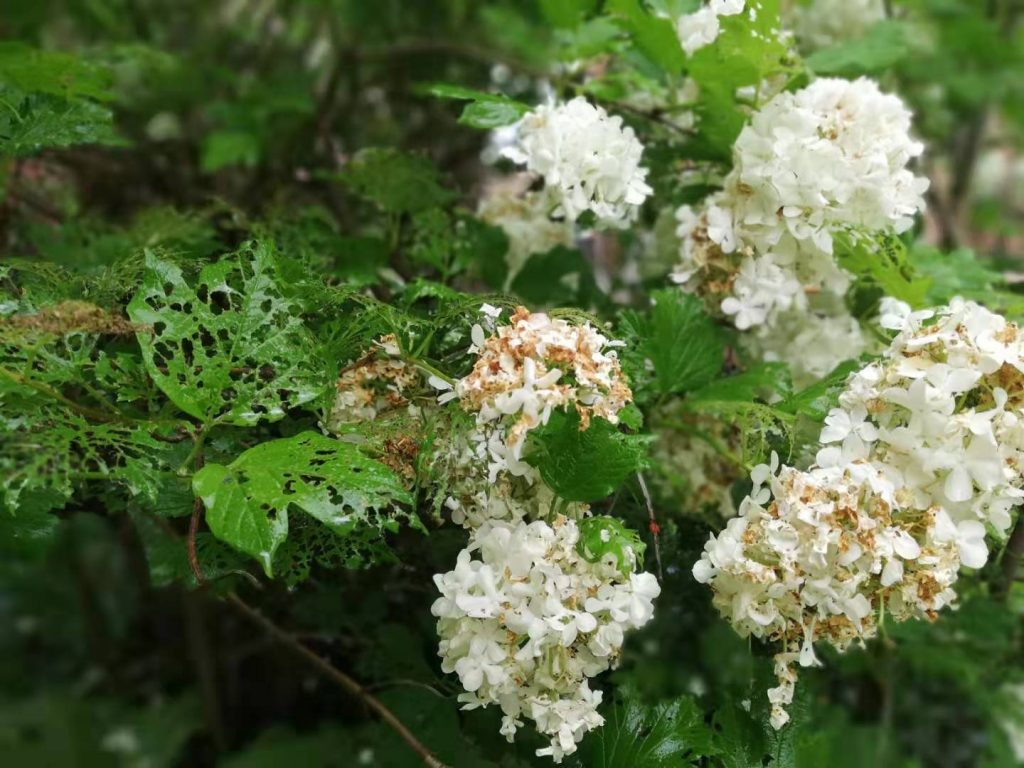
I have a white Hydrangea in my backyard. Come into blossom quite early in spring. BUT, after the white flowers come out, they soon are eaten by some insects. Could you give me some instructions to resolve this problem please?
There are a couple of possible culprits that can cause the damage shown in your photo:
- Rose Chafers – This is a small 1/3″ reddish brown beetle that attacks leaves, flowers and fruits of many plants. It can cause serious damage if present in large numbers. To control it, you need to consider its life cycle. The leaf damage is caused by the adult stage which emerge from the soil in the late spring/early summer. They lay eggs in the soil until mid summer. In about 2 weeks the eggs hatch into grubs that feed on roots and overwinter in the soil where they pupate in spring and then emerge as adults. This pest is difficult to control chemically. There are lure traps that trap them but these may also lure beetles to the surrounding plants. The best control is to hand pick them and drop them into soapy water.
- Japanese Beetle – This beetle is bigger 1/2″, metallic blue-green with bronze wing covers. It has a similar life cycle and attacks a wide range of plants, skeletonizing their leaves. However, it is more frequently a problem for oak leaf hydrangeas. Again a manual method of control is recommended. Lay a drop cloth below your plant and shake it to dislodge the beetles so they fall onto the cloth where you can then pick them and drop them into soapy water to destroy them.
The best defense is to make sure your plants are healthy so that they can recover from attacks by pests. Although hydrangeas are easy to care for plants, they prefer full morning sun with afternoon shade and like to be well watered. If your soil is poor, add compost and if sandy, fertilize once a year in late winter or spring. Don’t over fertilize as you may end up with more leaves and fewer flowers.
Here are a couple of sites you can look at for more information regarding pests and diseases of hydrangeas.
http://www.ladybug.uconn.edu/FactSheets/hydrangea-diseasesand-pests.php
https://www.canr.msu.edu/news/rose_chafers_a_punctual_and_pesky_insect

